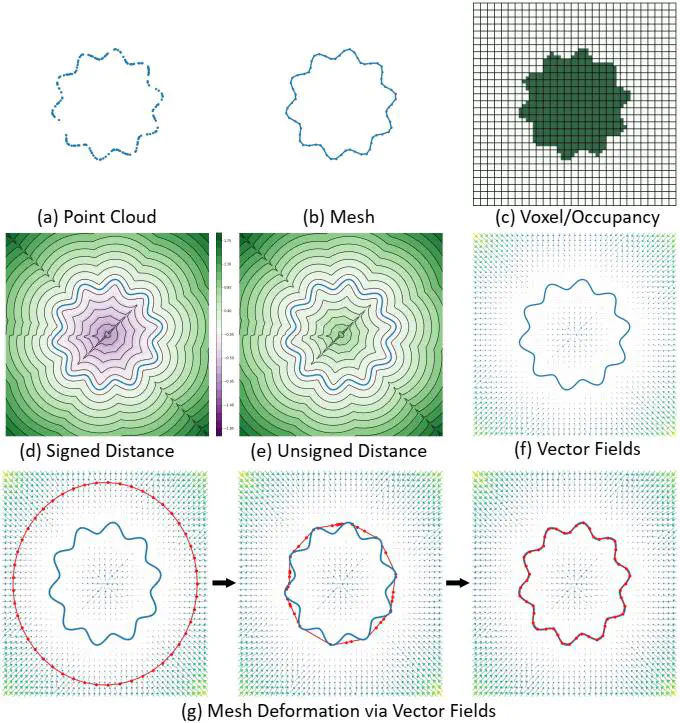Neural Vector Fields: Implicit Representation by Explicit Learning

Abstract
Deep neural networks (DNNs) are widely applied for nowadays 3D surface reconstruction tasks and such methods can be further divided into two categories, which respectively warp templates explicitly by moving vertices or represent 3D surfaces implicitly as signed or unsigned distance functions. Taking advantage of both advanced explicit learning process and powerful representation ability of implicit functions, we propose a novel 3D representation method, Neural Vector Fields (NVF). It not only adopts the explicit learning process to manipulate meshes directly, but also leverages the implicit representation of unsigned distance functions (UDFs) to break the barriers in resolution and topology. Specifically, our method first predicts the displacements from queries towards the surface and models the shapes as Vector Fields. Rather than relying on network differentiation to obtain direction fields as most existing UDF-based methods, the produced vector fields encode the distance and direction fields both and mitigate the ambiguity at “ridge” points, such that the calculation of direction fields is straightforward and differentiation-free. The differentiation-free characteristic enables us to further learn a shape codebook via Vector Quantization, which encodes the cross-object priors, accelerates the training procedure, and boosts model generalization on cross-category reconstruction. The extensive experiments on surface reconstruction benchmarks indicate that our method outperforms those state-of-the-art methods in different evaluation scenarios including watertight vs non-watertight shapes, category-specific vs category-agnostic reconstruction, category-unseen reconstruction, and cross-domain reconstruction. Our code is released at https://github.com/Wi-sc/NVF.
Supplementary notes can be added here, including code, math, and images.